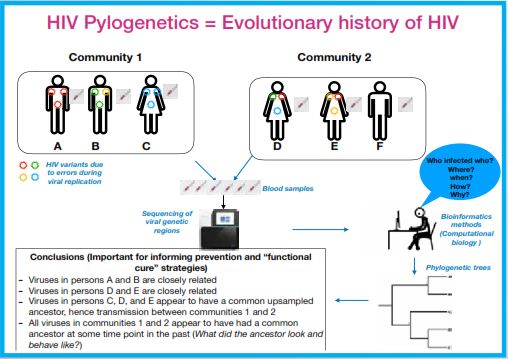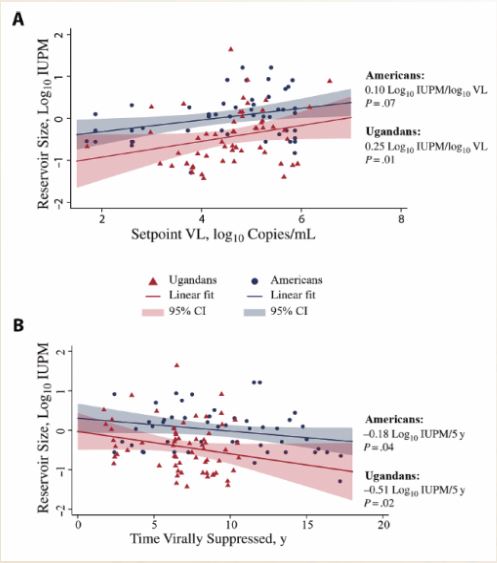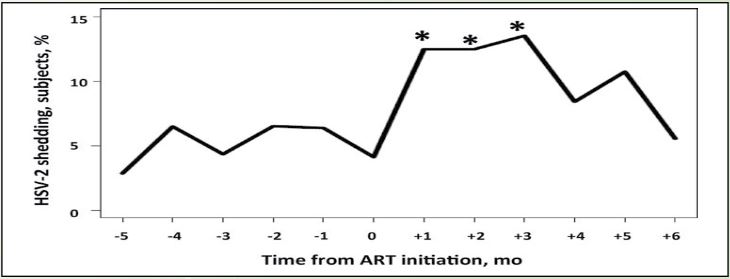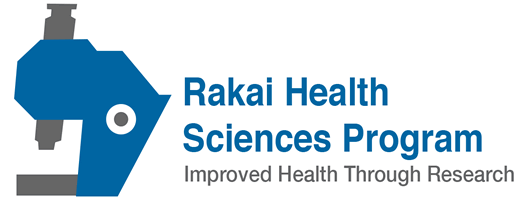HIV Phylogenetics

Evolutionary History of HIV
About the Study
Rakai Health Sciences Program (RHSP) is a member of the Phylogenetics And Networks for Generalized HIV Epidemics in Africa (PANGEA) consortium, whose aim is to use HIV phylogenetics (study of evolutionary history using HIV genetic information) to study HIV transmission and refine preventive interventions for epidemic control.
PANGEA includes several collaborators in sub-Saharan Africa. We have members on the executive and steering committees of the PANGEA network.
Phylogenetic Methods
We also use phylogenetic methods to study the latent viral reservoir (hiding HIV) to inform strategies for an HIV functional cure. We do this work with key collaborators at the Johns Hopkins University and the NIH; and Oxford university
Key Findings
Key findings thus far are that viral sequencing can determine the source of transmission and show that high prevalence fishing communities are not a major source of infection in the general population.
Quantitative Measurement & Correlates of the Latent HIV Reservoir
in Virally Suppressed Ugandans
About the Study
The study was the first to describe the latent HIV reservoir in a sub-Saharan African population. 90 HIV-infected participants on ART with suppressed viral loads (<400 copies per ml for a minimum of 10 months) were enrolled and followed with annual blood draws for latent HIV quantification.
Methods
A quantitative viral outgrowth assay was used to determine the frequency of rCD4 cells containing replication-competent virus in enrollment samples. Initial findings (Prodger et al CID 2017) are that the viral reservoir size in Ugandans is 61% lower than comparable African American populations (0.36 vs.1.08 infectious units per million cells (IUPM)).
Reservoir size was positively correlated with set point viral load and negatively correlated with the duration of viral suppression (Figure 4).
Significance to HIV Cure
The biological mechanism driving the observed smaller reservoir in Ugandans is of interest and may be of significance to HIV cure efforts.
We are currently investigating relevant virologic and immunologic characteristics and quantifying latently infected cells in annual follow-up samples, us to determine if latently infected cells are being eliminated more quickly in Ugandans compared to Americans.

Figure 4:Reservoir Size Vs Time Virally Suppressed
Herpes Virus Reactivation after starting on ART

Figure 5:The figure shows the increase in HSV-2 shedding following ART initiation.
Initiation of antiretroviral therapy (ART) can lead to a short term increase of herpes virus related illnesses including genital herpes flares, higher likelihood of varicella zoster virus (VZV) lesions, cytomegalovirus (CMV) uveitis or other endorgan disease, and herpes simplex virus (HSV)-associated encephalitis. (Tobian et al, JID 2013, Gianella et al JID 2015)
Herpes reactivation upon ART Immunological & Virological Studies Herpes Virus Reactivation after Starting ART.
Figure 5 shows the increase in HSV-2 shedding following ART initiation.
Herpesvirus reactivation upon ART initiation may be related to immune restoration disease of immune reconstitution inflammatory syndrome (IRIS), but the etiology is unclear.
The New Study
To investigate these mechanisms we have begun a new study (Herpes Virus Reactivation among HIV-infected women initiating ART) to document the incidence of clinical herpetic disease and viral shedding in vaginal and oral secretions from HIV-positive women initiating ART and to assess the associations between viral shedding or clinical disease and cellular, mucosal, and systemic immune activation.
We will also evaluate the potential impact of herpes virus reactivation on HIV cellular reservoirs.



